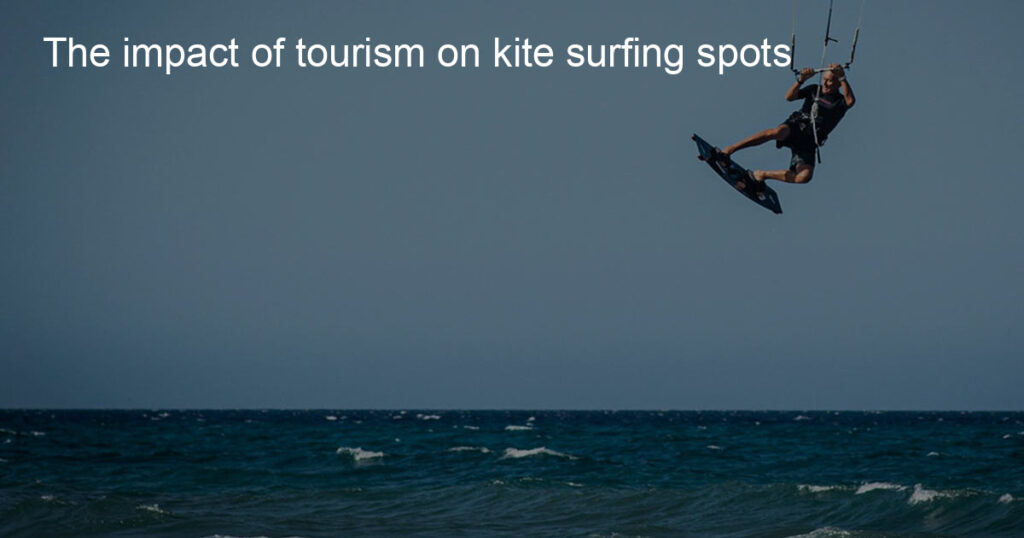Kite surfing has become one of the most popular watersports around, with adrenaline-seekers from all over the world coming to experience it. But as more and more people flock to the beaches for a chance to feel the wind in their sails, we can’t help but ask: how is tourism affecting these beloved kite surfing spots?
In this blog post, we’ll take a look at what kind of impact tourists have had on some of our favorite kite surfing locations – so that you can make an informed decision about where you choose to put your gear up when looking for that perfect wave!
What is surfing tourism?
Surfing tourism is a unique type of travel experience! It’s all about seeking out the best places to catch some waves – whether they be swells that crash onto a rocky shoreline, or friendly waves lapping at sandy beaches.
With world-famous surfing hotspots like Hawaii, Bali, and Mexico offering up an unrivaled mix of perfect conditions, stunning scenery, and colorful cultural experiences, it’s little wonder that surfers from all over the world flock to these idyllic locations in pursuit of life’s most thrilling sports. Whether you’re a newcomer looking for instruction or an experienced surfer aiming to bag some spectacular turns, surfing tourism is worth your consideration.
When did kitesurfing become popular?
Kitesurfing, also known as kiteboarding, has become an increasingly popular water sport since its development in the late 1970s. It originated from a combination of windsurfing and paragliding, combining elements from both sports.
The real tipping point for the growth of kitesurfing came around 2001 when the first twin tip boards were released and began to be mass-produced. This new shape allowed for more dynamic riding capabilities, giving rise to more outwardly visible maneuvers like jumps, powered carving, and upwind riding – making it much more attractive to both watch and participate in.
Today it’s estimated that there are between 1-3 million active kitesurfers worldwide and most coastal areas will have some availability of kitesurfing lessons so everyone can get out and experience this amazing adrenaline rush!
Why is Egypt popular with kite surfers?
With its reliable winds and crystal-clear waters, Egypt is a paradise for kite surfers. Its Mediterranean coastlines offer endless opportunities to take advantage of the winds that blow day after day, year after year. Egypt remains popular as a kite surfing destination because of its mix of world-class waves and flat-water lagoons, providing something for every level of surfer.
In addition, the warm water temperatures make it an enjoyable experience whatever the season. The best part is that with its well-developed infrastructure, Egypt offers a safe environment for kiting – from nearby hotels to quality equipment rental stores and instructors who can help you hone your skills and make your kite surfing holiday a truly memorable one!
Where is the best place to learn to kitesurf?
Kitesurfing is an exhilarating sport and if you’re looking for the perfect spot to learn it, you should consider La Ventana in Baja California, Mexico. The weather is almost always ideal there, with consistent winds that are perfect for kitesurfing novices and experts alike.
Plus, the crystal blue waters make it a beautiful place to explore—not to mention an incredibly fun place to kite! La Ventana also caters to all levels of experience with plenty of professional instructors available who can assist you along your kiteboarding journey. So book yourself a kitesurfing vacation at La Ventana and you won’t be disappointed!
What is the kite surfing capital of the world?
For kite surfers, there is only one place to call home: the world’s kite surfing capital – Dakhla in Morocco. This mesmerizing seaside town provides perfect conditions for its extreme sport – unusually powerful winds resulting from the shape of the location make it an ideal spot for adrenaline junkies.
Dakhla lures not only pro athletes with its pleasant weather and powerful wind speeds, but beginners as well; visitors can find a great selection of courses ranging from beginner’s classes to more advanced lessons. And after mastering those waves and soars, you can enjoy stunning views of turquoise waters and desert landscapes in between breaks. Embark on your next adventure and make your luck blow in the direction of Moroccan paradise!
Conclusion: The impact of tourism on kite surfing spots
In the end, kite surfing is a great way to enjoy the outdoors and make a splash in the waves. It’s no surprise that its popularity has led to some overcrowding—both in terms of people hitting up the same spots over and over again and businesses taking advantage of tourist dollars.
But, with proper education on sustainability, careful planning, and appreciation for local customs, visitors can help preserve these locations and keep kite surfing popular into the future. Don’t be afraid to plan your next kite surfing trip!
Just make sure you’re considering all consequences for you, other visitors, and locals alike when you arrive at your destination. By taking part in responsible tourism and leaving footprints (of kindness) wherever we go, we can all help protect these special places from the irreparable damage of unchecked tourism activity.








